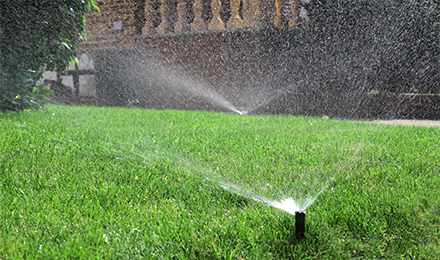Sprinkler Repair St George refers to the arrangement of equipment, gear, workstations, and other elements within a producing facility, industrial plant, or any workspace. The major purpose of plant layout is to design and arrange the physical setting in a way that optimizes productiveness, efficiency, safety, and total effectiveness. Here are the necessary thing purposes and aims of plant structure:
Optimizing Productivity: One of the first targets of plant format is to maximise productiveness by arranging workstations and tools in a logical and environment friendly sequence. An environment friendly structure reduces unnecessary materials handling, minimizes bottlenecks, and ensures clean workflow.
Minimizing Material Handling: Plant structure aims to minimize the motion of materials, products, and components inside the facility. By lowering the gap and time required for materials handling, it saves time and labor costs.
Improving Efficiency: An efficient plant layout minimizes idle time, waiting time, and downtime. It ensures that gear and sources are utilized to their full potential, resulting in improved efficiency and output.
Enhancing Safety: Safety is a crucial consideration in plant structure design. The association of machinery and gear ought to prioritize the protection of employees, minimizing the risk of accidents, collisions, and exposure to hazards.

Reducing Costs: A well-designed plant format can result in cost financial savings when it comes to labor, vitality, maintenance, and materials handling. It can also assist identify opportunities for price discount and process enchancment.
Facilitating Quality Control: An organized plant format makes it simpler to implement high quality control measures by guaranteeing that workstations and inspection factors are strategically positioned in the manufacturing process.
Flexibility and Adaptability: Plant layouts ought to allow for flexibility to accommodate changes in manufacturing quantity, product mix, and technological developments. A flexible layout can adapt to evolving business wants.
Optimizing Space Utilization: Effective use of obtainable house is a key consideration in plant format. Efficient house utilization can result in value financial savings by decreasing the necessity for extra sq. footage or warehouse area.
Enhancing Communication and Collaboration: The structure can influence communication and collaboration amongst employees. An open and well-organized structure can foster better communication and teamwork.
Minimizing Environmental Impact: Plant structure design can also contribute to environmental sustainability by optimizing useful resource utilization, lowering waste, and minimizing energy consumption.
Compliance with Regulations: Plant layouts ought to adhere to regulatory requirements and safety standards, ensuring that the power operates within authorized and moral boundaries.
Improving Morale and Job Satisfaction: A well-designed plant layout can contribute to a more snug and arranged work environment, enhancing employee morale and job satisfaction.
Streamlining Maintenance: Easy entry to tools and equipment simplifies upkeep and restore tasks. An organized format can scale back downtime related to upkeep actions.
In summary, plant format serves as a strategic tool for businesses and industries to optimize their operations and obtain various goals, together with productivity enchancment, price discount, safety enhancement, and resource efficiency. It is a dynamic process that should be periodically reviewed and adjusted to accommodate changing needs and technological developments..
